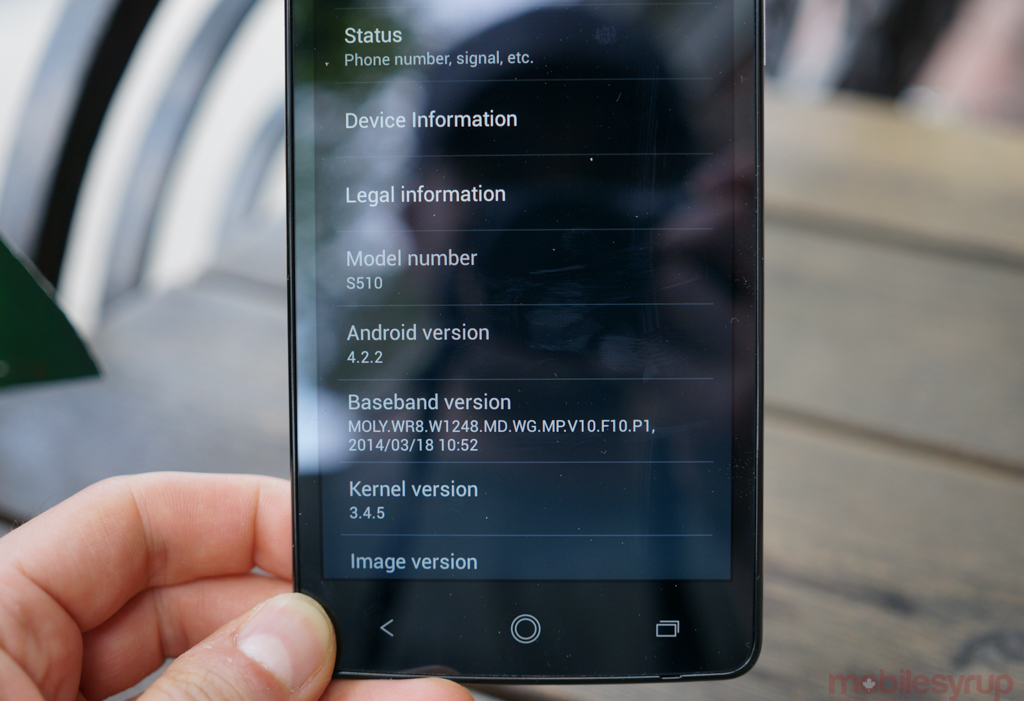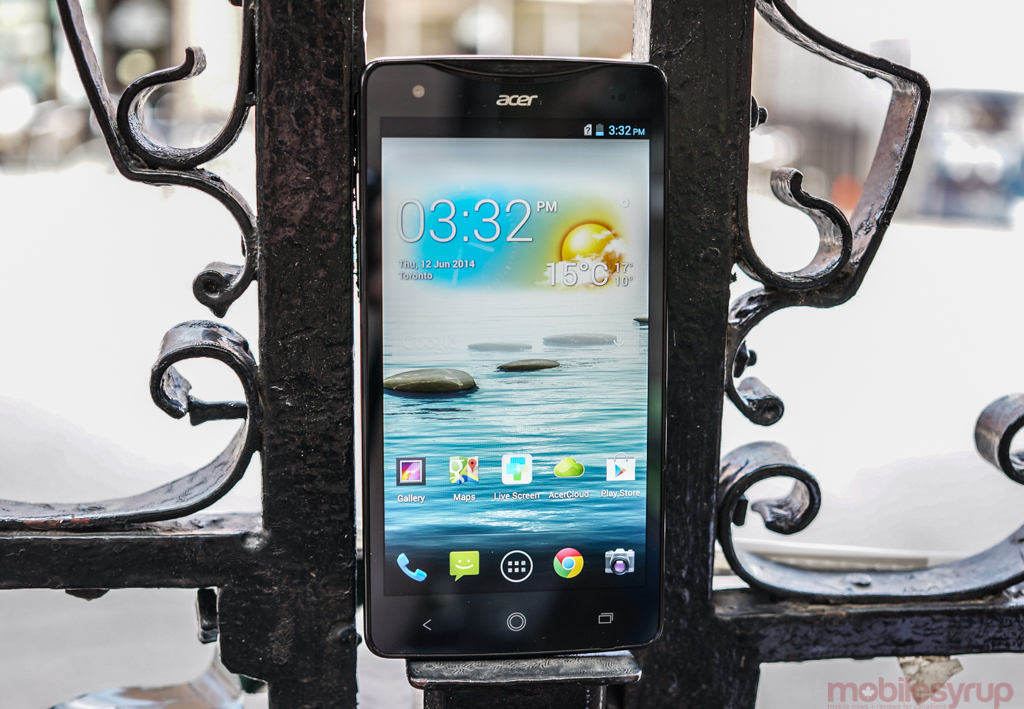
What’s old is new again has never been a mantra adopted by the mobile industry — the opposite is in fact true — but the rise of the unlocked smartphone could change that to some extent.
The Acer Liquid S1 is not a new phone, but the demand for quality, inexpensive and unlocked handsets spurred the Chinese company to return, after almost three years, to the Canadian smartphone market. This time, instead of partnering with the carriers to undercut and eventually whittle down the cost of their smartphones to $0, Acer has landed a deal with Staples, Canada Computers and other major technology retailers to sell directly to the consumer.
It’s a big gamble, especially when the competition in so fierce in this market segment. Everybody from Samsung to LG to Nokia and, most recently, Motorola, have taken steps to grab market share in the entry- and midrange tiers, but Acer’s S1, with its bright, oversized 5.7-inch screen towers above them all. But can the bite match the bark? And is the Acer Liquid S1 worth your $379.99, especially when it doesn’t boast LTE connectivity? Let’s find out.
Specs
- Android 4.2.2
- 5.7-inch 1280×768 pixel LCD display (257 ppi)
- MediaTek MT6589 quad-core 1.5Ghz SoC
- 1GB RAM / 8GB internal storage (microSD slot included)
- 8MP rear camera, 2MP rear camera
- HSPA+ 850/1900
- 2,400mAh removable battery
- 163 x 83 x 9.6 mm
- 195 grams
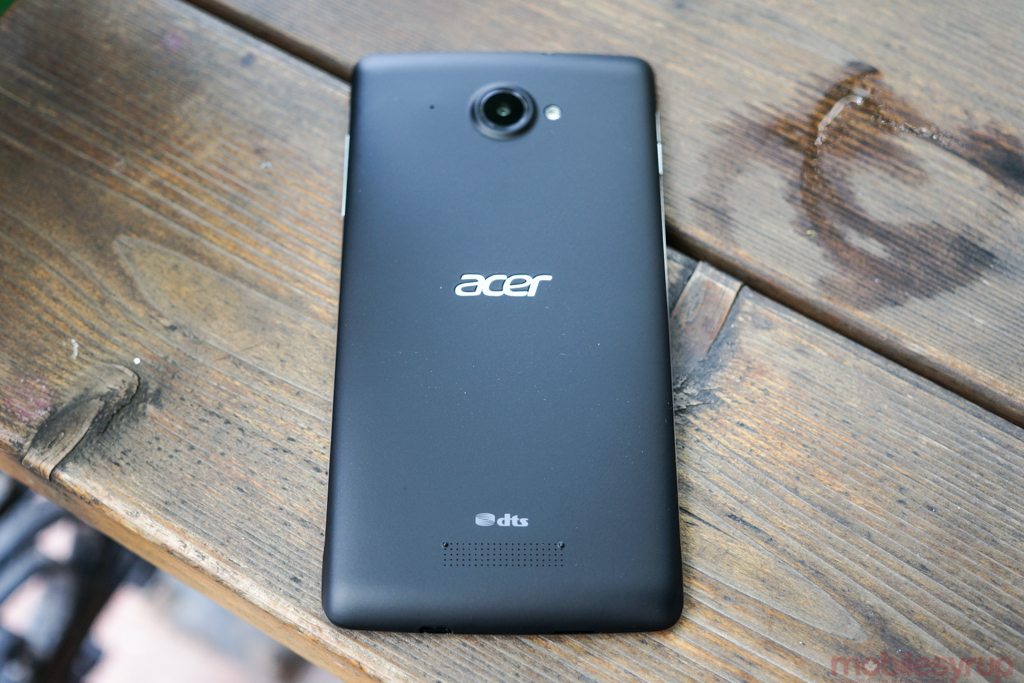
The Gist
The Acer Liquid S1 is massive, both in size and weight. The 5.7-inch screen comprises a good portion of the device’s front, but the bezels above, below and to the sides are spacious to a fault. The hardware navigation keys, for which Acer has replaced the traditional home button design with a concentric circle, are nicely spaced below the display.
To get a scale of how massive the S1 really is, compare its dimensions to the Samsung Galaxy Note 3, which sports a screen of the same size. The Note 3 is 151 x 79.2 x 8.3mm and weighs 168 grams, which includes its S Pen. The S1 is 163 x 83 x 9.6mm and weighs 195 grams. The S1 is far closer in dimensions to the Galaxy Mega 6.3, but lacks the increased screen real estate.
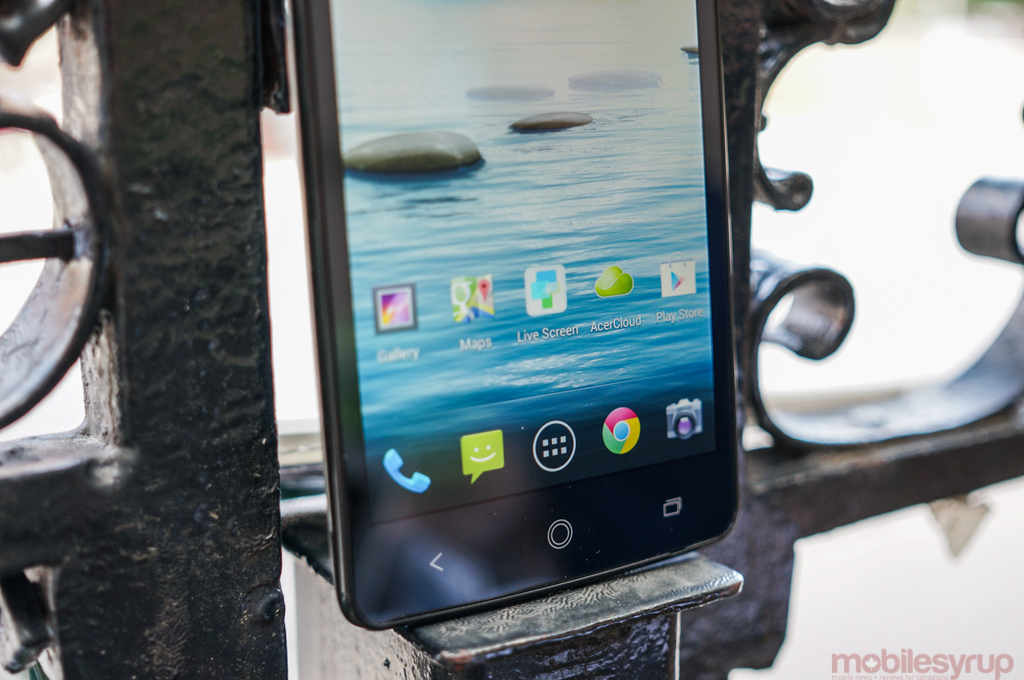
Once you got over its size, the S1 works like any other Android device. It runs a fairly unfettered version of Android 4.2.2, which is nearly two years old and is increasingly becoming obsolete. Still, the phone runs alright, and app elements make decent use of the big screen.
For some reason, Acer chose to put the power button on the left side of the chassis, making it supremely inconvenient to turn the screen on and off. And while the device has an interesting aesthetic, with a curved etched headpiece and similarly diminishing curves on the sides, it’s the weight and heft that really stuck with me.
The S1 is a decent smartphone for its price. That’s the real takeaway here: its quad-core MediaTek-based Cortex-A7 SoC is quite a bit slower than today’s mainstream flagships, but it’s more than capable of powering modern Android apps and the occasional game.
The multithreaded capabilities of Cortex-A7 are no match for even last-generation Cortex-A9 or even the slowest of Qualcomm’s Krait line (except for the Snapdragon 200/400 variants that are Cortex-A7 powered themselves) but you can expect performance to match the Samsung Galaxy S3 or thereabouts, at least in CPU performance.
It’s in the graphics performance department that the MediaTek SoC shows its age — it’s already two years old — with high-performance 3D games losing frames quite readily.
What Works
- The S1 has a big, bright screen that handles outdoor situations quite well.
- Its performance is decent in most situations, but the Cortex-A7 cores are heading for obsolescence and may not hold up in future apps. Performance around the OS, however, is swift, with the only real issues coming from app loading times.
- The camera’s F2.0 lens makes snapping photos quick and generally trustworthy, while the camera app comes with enough settings to appease most photography fans.
- The battery life from the 2,400 mAh cell is good, too, lasting around 12 hours from a single charge. That is it replaceable is helpful, too, though good luck finding a second cell.
- Audio from phone calls is excellent — Acer seems to have found the right balance between tone and sensitivity here.
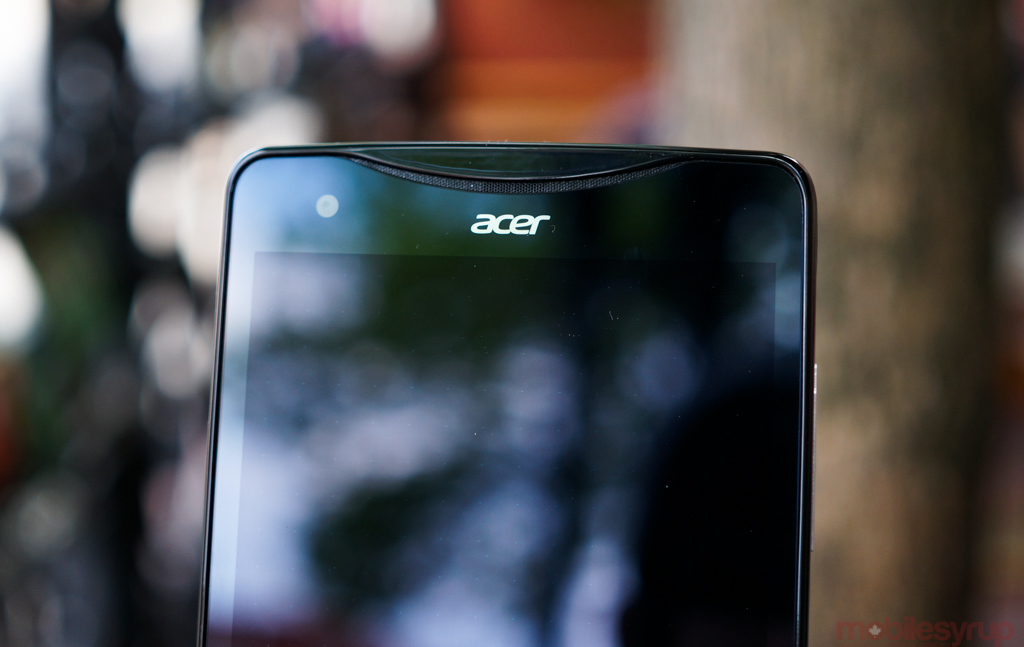
What Needs Work
- The screen has terrible viewing angles — an IPS display this is not — that wash out readily after 20 degrees or so to either side.
- The device lacks LTE support, which limits its potential uptake. I got a rather-disappointing average of 5.6Mbps down and 0.7Mbps up using the TELUS HSPA+ network.
- Acer includes a few interesting software tweaks, such as Scheduled Power On & Off and a DTS-calibrated equalizer, but there is more bloatware on this carrier-free, unlocked smartphone than most Rogers- or Bell-sold devices. That’s pretty inexcusable, if you ask me, especially when few of the “value additions,” from AcerCloud to Moodagent to Live Screen, are better than easily-accessible third-party alternativ
- The $379.99 price is quite a bit higher than the more-powerful Moto G. It actually may be prudent to take a look at a used Galaxy S3, which costs around the same as the S1 new and sports a better Super AMOLED display, a faster processor, and LTE connectivity — not to mention a newer version of Android.
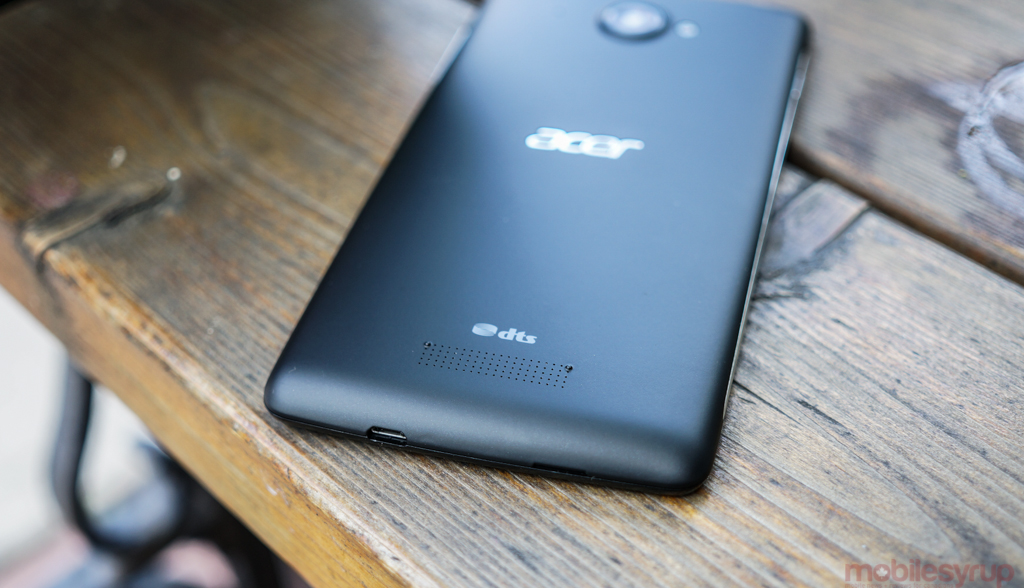
The Acer Liquid S1 is the company’s most expensive unlocked smartphone currently available, but other than its size lacks a compelling reason to select it over the cheaper, faster and more up-to-date Moto G LTE.
MobileSyrup may earn a commission from purchases made via our links, which helps fund the journalism we provide free on our website. These links do not influence our editorial content. Support us here.

